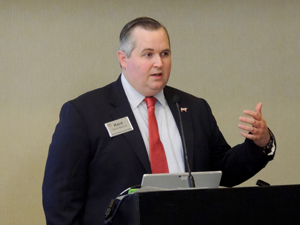After more than 20 years of consternation, negotiation, conciliation and disappointment, the U.S. and European Union are now set to begin another round of talks on allowing the EU’s 28 nations to buy more U.S. beef.
The European Council, a panel made up of ministers from each EU country, agreed last week to authorize negotiators for the trade bloc to try to work out a way to finally satisfy U.S. beef producers who have been frustrated for years over a lack of access.
“Now that they have the authority, hopefully we can quickly prosecute the negotiations with them to improve the EU quota (for U.S. beef),” a U.S. government official told Agri-Pulse.
Many in the U.S. will never be completely satisfied so long as the EU continues to ban most U.S. beef, allowing in only meat from animals that were never treated with growth hormones, but the Europeans have been clear that’s not open for negotiation.
“The aim of the negotiations will be to settle definitively a long-standing WTO dispute,” the Council said. “It is not meant to affect in any way the EU ban on hormones-treated beef as such.”
While these new negotiations – expected to start as early as this week – are seen as a way to bring the two decades of disagreement to an end, Kent Bacus, director of international trade and market access for the National Cattlemen’s Beef Association, sees the talks as a step in the right direction “that will hopefully lead to a longer-term solution in a free trade agreement.”
Last week the Trump administration formally announced to Congress that it intends to begin negotiating free trade agreements with the EU, Japan and the U.K.
The EU has been refusing to budge on acceptance of hormone-treated beef since before 1998, when it lost a dispute at the World Trade Organization to the U.S. The dispute panel and appellate judges agreed that the EU ban was unjust, but the Europeans would not comply with the rulings, even under the threat of $117 million of tariff retaliation per year.

Kent Bacus, NCBA
Rather than go down that route, the two sides agreed to a compromise. In 2009 the U.S. agreed to a European proposal in a memorandum of understanding to set up 45,000-tariff rate quote that would allow the U.S. to export beef to EU countries without the normal steep tariffs of about 20 percent. U.S beef producers were satisfied, but only for a short time. It didn’t take long before the EU began approving other countries like Australia, New Zealand, Uruguay and Argentina to ship beef under the TRQ.
With all those other countries shipping beef to Europe in the TRQ, the U.S. these days only manages to sell about 23,000 tons annually to Europe, said Bacus. “We’ve been very frustrated for a long time with our access into the European Union. We won the WTO case. They’ve chosen not to abide by those terms.”
Still, Bacus stressed that NCBA fully supports efforts by the U.S. Trade Representative to get a new deal with Europe on beef access, even if it does not tear down the EU ban on hormone-treated beef.
There does not appear to be an obvious solution. Another TRQ that is open not just to the U.S. but all other WTO countries would likely result in the same situation as the status quo, with diminishing access for U.S. beef.
Initially, it was Michael Froman, USTR in the Obama administration, who began demanding that the EU offer a solution. And the EU on Friday that it was hoping to do exactly that.
“The aim of the negotiations is to find a mutually satisfactory solution in line with WTO rules,” the EU said. “The Commission is not authorized to negotiate an increase in the existing TRQ but can discuss a country-specific allocation of the overall quota.”
Normally any TRQ established by a WTO country would have to be open to all other WTO members, unless it was done as part of a free trade agreement. That essentially is the gist of Article XIII in the General Agreement on Tariffs and Trade (GATT), the precursor and foundation for the modern WTO.
There are exceptions, though, one of which allows a WTO member to divide up a quota between individual countries, much the way the U.S. does for its sugar TRQ. Every year the USTR announces how much of that TRQ sugar-producing nations will get.
There is a catch, though. The division needs to be fair, and that may mean that the quota for other beef exporting countries may have to be increased along with any quota for the U.S.
“Negotiations with other supplying countries may be needed to ensure that any agreed country-specific allocation with the U.S. respects their existing rights under the WTO/GATT Agreements,” the EU Council said.
One thing seems certain: The U.S. will not be satisfied without a much bigger quota that’s reserved only for U.S. producers.
“As far as we’re concerned, that’s our quota,” said Bacus, who stressed the group is not yet optimistic about the negotiations. “We’re not popping champagne bottles or anything because we don’t know what the terms are and we don’t know how long it’ll take the EU to actually move forward with negotiations.”
For more news, go to: www.Agri-Pulse.com


